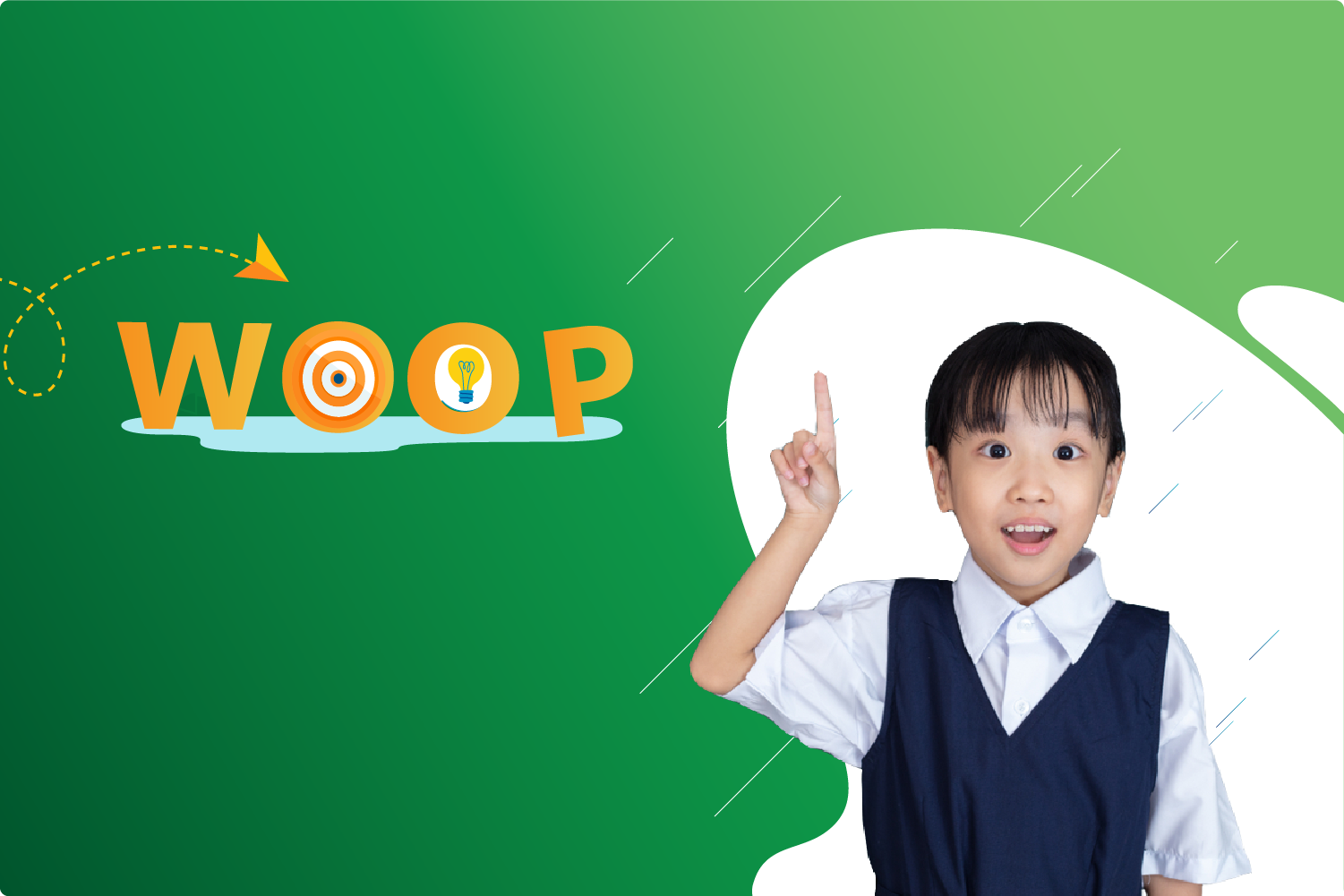It’s that time of year – for newly purchased textbooks, sharpened pencils all accounted for, washed desks awaiting handprints and chairs awaiting new friends. The time of year that is crisp with newness. The time of year can feel like New Year’s Eve: filled with hope, promise, and resolutions.
As the first day of school draws near, it’s a great time to envision your goals for the coming year. Setting meaningful and actionable goals for school will help you get where you want to go. For parents, teaching your children to set goals is a valuable life skill. Through goal setting, students gain self awareness, self-efficacy, and resilience or “Growth Mindset.”
In this article, we introduce WOOP – an easy-to-follow but effective goal setting framework to get you started. We also include a blank planning template that students can use for themselves, or allow parents to have their child complete it as they set their own learning goals.
With all your energy recharged, let’s start thinking about what you want to do differently in this next school year.
What is WOOP?
Standing for Wish, Outcome, Obstacle, and Plan, WOOP is a practical, accessible, evidence-based mental strategy that people can use to find and fulfill their wishes and change their habits.
“WOOP” is based on 20 years of research in the science of motivation by Dr. Grabiele Oettingen — a professor at New York University and the University of Hamburg — and her colleagues. It presents a unique and surprising idea: The obstacles that we think most impede us from fulfilling our wishes can actually help us to realize them. WOOP instructs us to dream our future dreams but then to identify and imagine what inner obstacles or hindrances of reality prevent us from achieving these dreams. When you WOOP, you think about your ultimate goal, the best possible outcome, the personal obstacle(s) that stand in the way, and the plan for getting around those roadblocks.
Why WOOP matters?
A common mistake when setting a goal is to indulge in fantasies about how great life will be after accomplishing it—without considering what’s currently holding us back. This is also the most intriguing part of WOOP – it often requires us to mentally contrast our hoped for outcome with an obstacle that stands in our path. WOOP also reminds us to step away from a particular goal if it conflicts with one another. WOOP works because it guides students through those in-between and oft-forgotten steps. Rather than pursuing goals that feel imposed by others, WOOP taps into a student’s intrinsic interests.
In schools, WOOP significantly improves effort, attendance, homework completion, and GPA. WOOP develops self-control so that students can earn better grades, develop physical fitness, and build stronger relationships. WOOP can help with any kind of wish, whether it’s something large (“I want to start a school newspaper”) or comparatively small (“I want to get an A in Science this quarter”). When used regularly, WOOP builds up what educators call “student agency” or the drive and motivation for students to take control over their own learning.

The 4 steps of WOOP
WOOP works in a simple 4-step process: students develop their own goals, they envision what the goal would feel like, they think about why they might not meet their goals, and then they plan ahead on how to deal with these problems.

Step 1: Wish
Something you really want to accomplish. A wish that is exciting, challenging, and realistic.
First off, think about this school year, what is your one dearest wish that you would like to fulfil and that you also think you could fulfil during this time frame? Fulfilling your wish should be challenging for you, but you should feel that it is possible. For best results, make it SMART:
- Specific
- Manageable
- Attainable
- Relevant
- Time-sensitive
For example: “read three books over each month”, or “finish at least one SAT practice test each week”, or increase my GPA to a 3.0 before end-of-term exams”.
If you have several wishes, select the one that is most important to you. The wish can be about your school, relationships, your health, a job, or anything else that is important to you. Find this one specific wish, summarize it in 3 to 6 words, and keep it in front of your mind.

Step 2: Outcome
The best outcome that would result from accomplishing your goal.
Now, identify your best outcome and take a moment to imagine it as fully as you can. What is the best thing, the best outcome that you associate with fulfilling your wish? If your wish is fulfilled, where would that leave you? What would be the best, most positive outcome? How would fulfilling your wish make you feel? Find the best outcome, summarize it in 3 to 6 words, and keep it in front of your mind.
For example: “I have more energy and feel better about myself”, or “My GPA is good enough to apply to top colleges”
Step 3: Obstacle

The personal obstacles that prevent you from accomplishing your goal.
Next, let your mind go and imagine any potential inner obstacle. What is your main inner obstacle? What is it within you that holds you back from fulfilling your wish? It might be an emotion, an irrational belief, or a bad habit. Think more deeply—what is it really?
For example: “I’m tired when I get home from work and just don’t feel like reading.” or “I procrastinate and get distracted by Facebook”
When it comes to Obstacle, some students may ask: “What if I cannot control the obstacle?” However, remember that we’re searching for internal obstacles. When we look for obstacles within us, we are better able to control and to overcome them. We often have limited power to change our environment. What we can change is how we respond to and deal with our environment. If you have trouble identifying an obstacle that feels surmountable, take the obstacle you have thought of and see if you can break it down into several smaller, more surmountable obstacles.

Step 4: Plan
Finally, we get really practical. How are you going to make your Wish happen? Let’s create a simple If-Then plan.
What can you do to overcome your obstacle? Identify one action you can take or one thought you can think to overcome your obstacle. Make the following plan for yourself: If / When _________ (obstacle), then I will __________ (action to overcome obstacle).
For example: “If I get up in the morning, then I immediately put on my sneakers and go for a run even if I don’t feel like it.”, or “If I get distracted during my work, then I will block all distracting websites and get back to work.”
Conclusion
WOOP is a scientifically proven tool that helps us change our behaviors and achieve our goals. It’s the combination of mental contrasting and implementation intentions. In short, WOOP is just about this simple but powerful question:
“What is it that holding you back from fulfilling your wish?”
We highly recommend you to make WOOP a habit. The more you do it, the more comfortable and successful they will be with the process. Pick a goal that’s meaningful to you, and work through the WOOP process.

Last but not least, we also include a blank WOOP template below to guide you through this process.

Let’s use WOOP to excel at school, learn more, achieve more, and enjoy each day at school more. We wish you the best school year ever!
Reference:
https://www.businessinsider.com/gabriele-oettingen-woop-2016-6
https://characterlab.org/activities/woop-for-classrooms/
http://woopmylife.org










